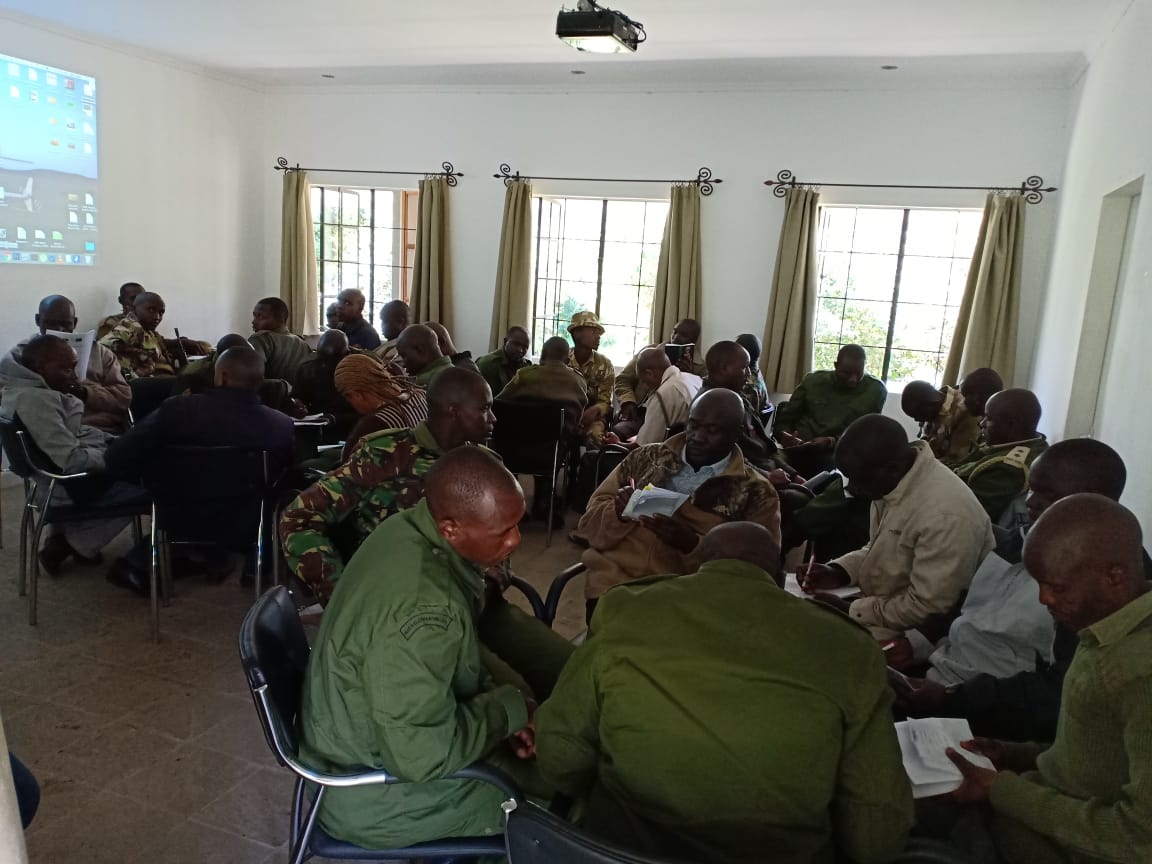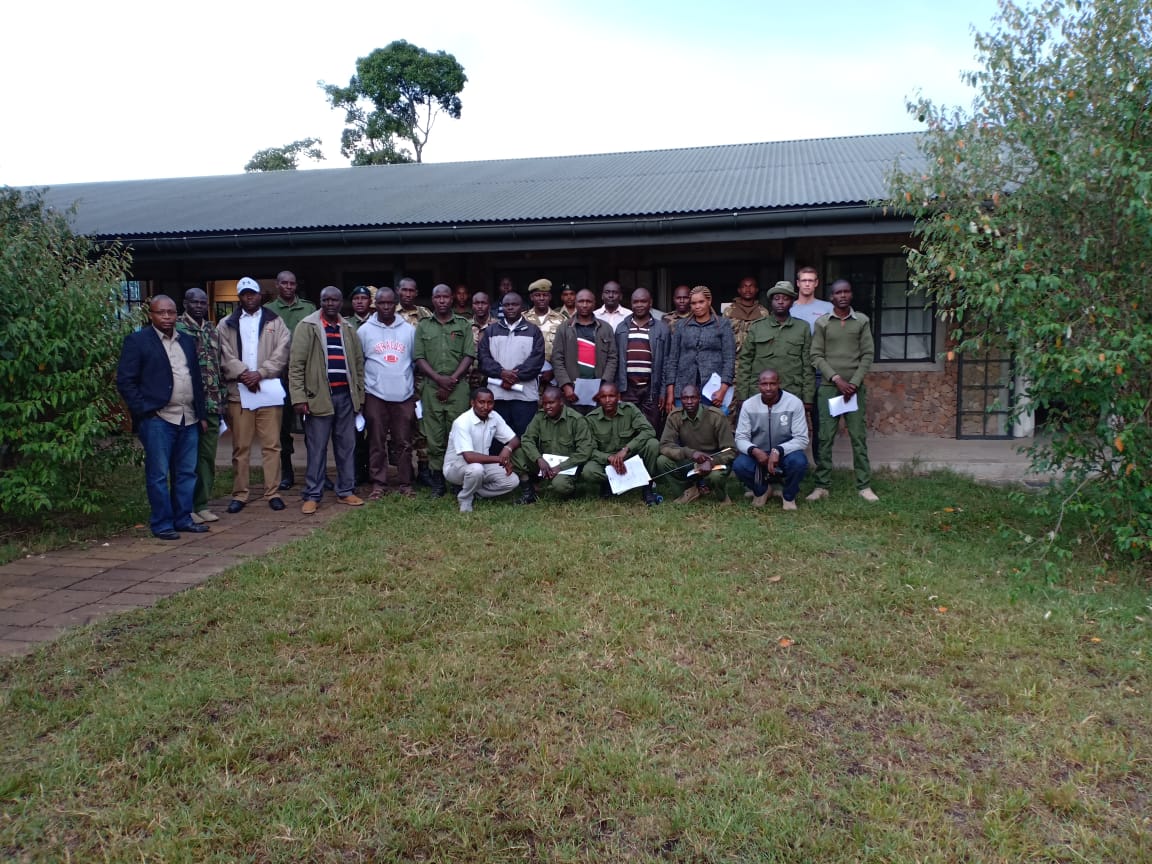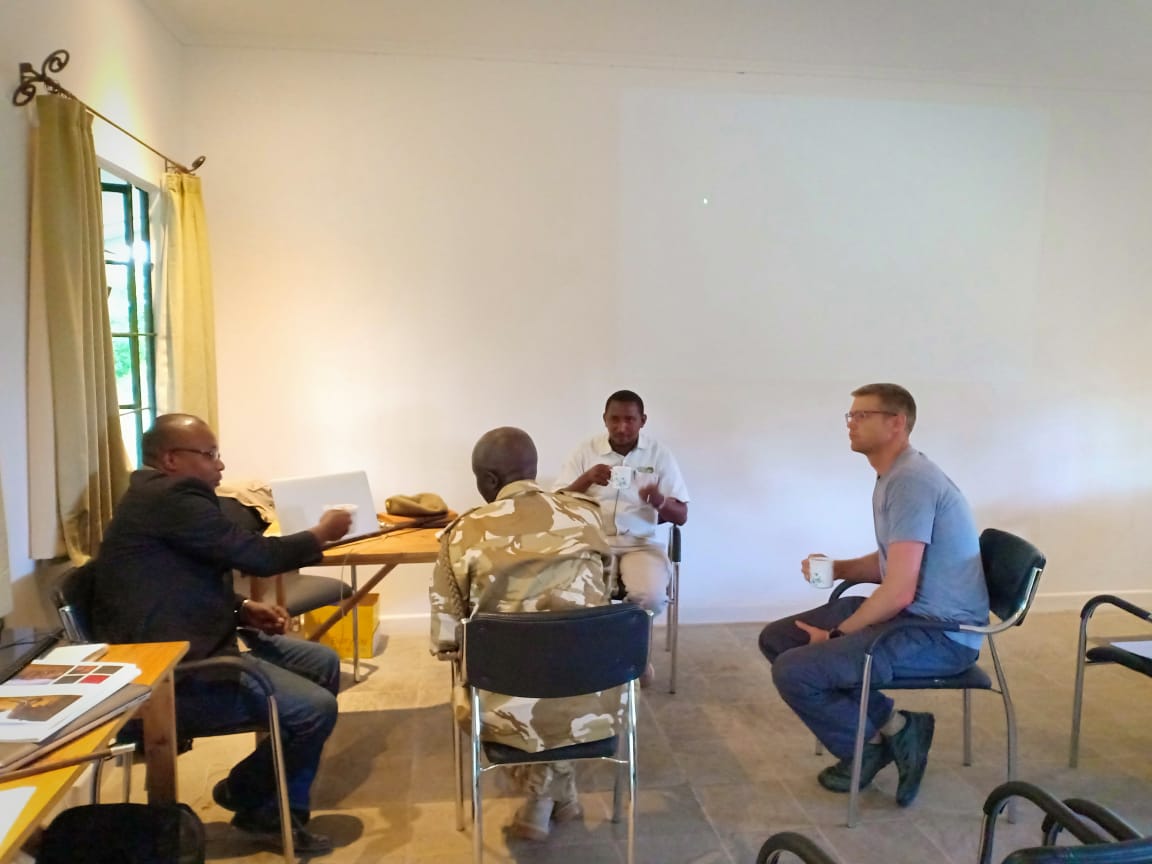The MIKE program, Monitoring of Illegally Killed Elephants, is a CITES program which strives to gather detailed data on elephant mortalities. Although the Mara ecosystem is not an official MIKE site it has been treated as one in terms of collecting, harmonizing and presenting data to the national government. Each quarter stakeholders collecting carcass data gather around the Mara to harmonize the data which means the data is reviewed together to ensure accuracy.
During the last harmonization meeting for the fourth quarter of 2018, Kenya Wildlife Service (KWS) made some key recommendations for the program moving forward; the most important focus was to improve data quality, which is why a dedicated MIKE training for all of the conservancies, Maasai Mara National Reserve (MMNR), MEP and KWS was scheduled. The training is grouped into three two-day sessions that started on April 8. MEP hosted the second installment at MEP HQ on April 10 with MMNR, MEP, KWS, Narok County Government and representatives from Lemek, Pardamat, Olarro, Ol Kinyei, Olare Motorogi and Mara North conservancies and SORALO all in attendance.

KWS Senior Warden Dickson Ritan presenting to MIKE trainees at MEP HQ.
The main purpose of the workshop was to disseminate and promote MIKE ranger-based monitoring protocols and guidelines as a basis for strengthening MIKE site data collection and management. Improving the ability to collect accurate data helps us identify issues surrounding elephant deaths. We recently supported forensic training for the conservancies and MMNR and this additional MIKE training adds into to the same objective. Specifically, the workshop focused on enhancing the skill and knowledge levels of field staff in collecting good quality elephant mortality data; to ensure that site and national level staff effectively manage carcass data and records; and to ensure that Kenya sites prepare MIKE carcass reports in accordance to agreed format and standards.

Using an old elephant carcass that had died of natural causes, KWS taught trainees in the field how to properly collect data at a MIKE site.
Kenya has four official MIKE sites: Tsavo, Samburu-Laikipia, Meru and Mt. Elgon that were established in 2002 by the CITES MIKE program. Sites were established in 2002 based on the higher levels of poaching and the lower levels of monitoring and protection that were in place in those four regions. In 2002, the Maasai Mara did not have a problem with elephant poaching and was therefore not considered for the MIKE program. Since then, the elephant population has increased as have the levels of poaching. This has led the Kenyan government to treat the Maasai Mara as a MIKE site although it is not yet officially registered as such under the CITES program. The elephant population disperses from the protected area (MMNR) to the neighboring conservancies and community lands so there are a number of partners involved in elephant monitoring and mortality data collection and for that reason, like the rest of MIKE sites, mortality data is harmonized on quarterly basis and shared among the partners. This is why participants were taken through MIKE reporting obligations to CITES that included MIKE data flow from ranger posts to MIKE CCU and ultimately to the production of updated MIKE analysis reports for CITES. Emphasis was put on reporting procedures and quality data collection.

Group discussions taking place during training.
Participants took part in field data collection exercise using the revised MIKE form and proposed/revised KWS FINDREP carcass form recording elephant carcass data in groups. They were also trained on use of the GPS units for recording location data, cameras, establishing the cause of death, deducing the reason for death, elephant aging, carcass aging, sexing and recording evidence at the scene. Overall, the MEP training had 45 participants and at the end of the three sessions 92 people were trained in MIKE data collection procedures and harmonization.

The entire MIKE training workshop team in front of MEP HQ offices.
Mara Elephant Project would like to thank Kenya Wildlife Service for partnering with us to make this training happen and Ol Kinyei Conservancy, Olare Motorogi Conservancy and Mara North Conservancy contributing financially along with MEP toward this vital training.
KWS Senior Warden Dickson Ritan, KWS National MIKE Coordinator Sospeter Kiambi, KWS Site MIKE Officer Stephen Ndambuki and MEP Director of Research & Conservation Dr. Jake Wall all having a discussion during the training.


